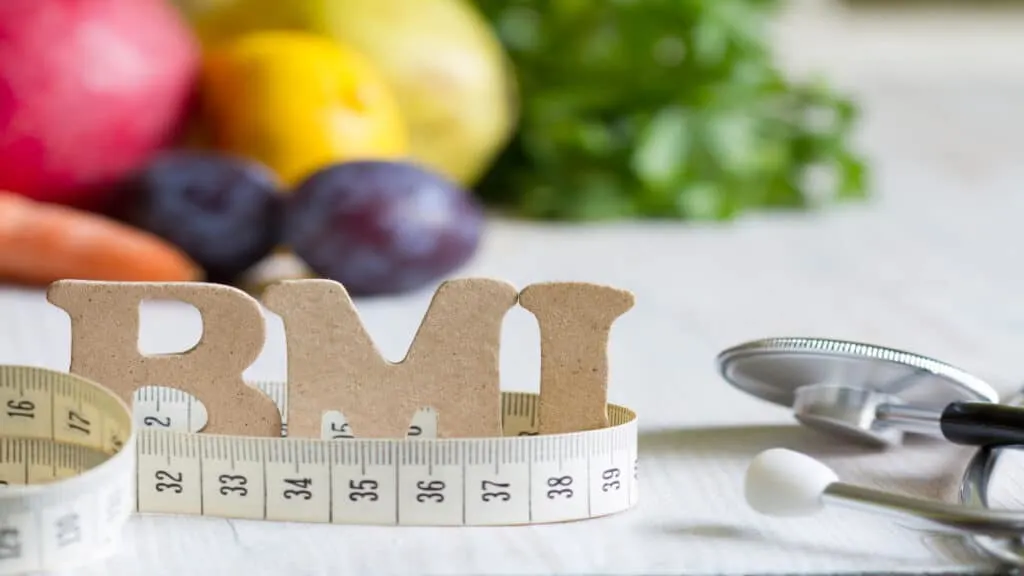Did you know that a BMI of 38 is 8-9 BMI higher than usual for men and women?
Well, when you consider that the average is already too high, you begin to realize that a 38 BMI score is a big indicator of severe body fatness.
Related:
- Normal BMI for men
- 30 body mass index
- 31 body mass index
- 32 body mass index
- 33 body mass index
- 34 body mass index
- 35 body mass index
- 36 body mass index
- 37 body mass index
- 39 body mass index
Is a BMI of 38 morbidly obese?

Going by the standard definition and outline of obesity classes, a BMI of 38 falls into the class 2 obesity category and is, therefore, not considered morbidly obese.
Yet, these classifications, being quite old at this point, are often disputed by obesity researchers.
After all, because BMI can’t distinguish between muscle and fat, it’s ripe for underestimation.
For example, a BMI 38 individual could easily have more body fat than a morbidly obese person if the morbidly obese person has way more muscle mass than them.
When you consider that some people with a normal body mass index have too much body fat, you come to the conclusion that most people with a BMI of 38 are likely to be severely obese in terms of abdominal fatness.
What does a 38 BMI look like for men and women?

In general, a 38 BMI score results in an obese body type because someone with a body mass index of 38 will naturally be storing excess body fat around their waist, limbs, hips, back, and chest.
Obviously, a BMI of 38 will look different depending on how much muscle a person has.
While muscle alone can’t account for such a high BMI, having lots of muscle can definitely make a person look leaner than someone of an equivalent BMI.
Although it might not be nice to hear, a person with a body mass index of 38 will likely have much more body fat than the average person, who is already far too heavy.
Common BMI 38 scores and grades

These are the 38 BMI scores that people get when they put their height and weight into a BMI calculator.
38.1 BMI
If you have a 38.1 BMI, then you’re on the higher end of the obesity category. Specifically, a BMI of 38.1 is class 2 obesity.
38.2 BMI
Those with a 38.2 BMI likely have a lot of excess body fat and could be seriously harming their health. As such, if you have a BMI of 38.2, then you’ll need to lose significant amounts of weight to enjoy your best health.
38.3 BMI
If you’ve got a BMI of 38.3, then even if you’re muscular, you’re still risking your health by being so heavy. There comes a point when too much body fat, rather than being protective, becomes detrimental to your physical health.
38.4 BMI
A 38.4 BMI is well above average and, by my reckoning, is a case of severe obesity if an individual has too much body fat, particularly a large waist.
38.5 BMI
A BMI of 38.5 is closing in on the morbid obesity category. Therefore, if you have a 38.5 BMI, you should seek medical help to lose your excess weight so that you can slim down safely.
38.6 BMI
If you have a 38.6 BMI, then you have an excessive amount of body fat, some of which may be visceral fat, which wraps around organs such as your liver and intestines.
38.7 BMI
A 38.7 BMI is very high for males and females. Of course, many people these days have a BMI that exceeds 38.7. Still, such a body mass index is undeniably bad for your health.
38.8 BMI
A BMI of 38.8 is on the upper end of the class 2 obesity category and needs to be lowered if an individual wants to experience good health.
38.9 BMI
If you have a BMI of 38.9, then you’re very close to being categorized as severely obese. In fact, some experts may consider a 38.9 BMI to already be morbidly obese.
In summary: Why is it bad to have a body mass index of 38?
It’s bad to have a BMI of 38 from a physical health standpoint because obesity can lead to chronic disease if left untreated, which will reduce a person’s quality of life.
While some people don’t consider a 38 BMI to be severely obese, a BMI 38 individual could well have more body fat than someone who is considered morbidly obese if they have less lean mass.
So while these obesity classifications can be helpful, they shouldn’t detract from the fact that having a body mass index of 38 is a serious problem.
References
- Wellens, R. I., Roche, A. F., Khamis, H. J., Jackson, A. S., Pollock, M. L., & Siervogel, R. M. (1996). Relationships between the Body Mass Index and body composition. Obesity research, 4(1), 35–44. https://doi.org/10.1002/j.1550-8528.1996.tb00510.x
- Garrow, J. S., & Webster, J. (1985). Quetelet’s index (W/H2) as a measure of fatness. International journal of obesity, 9(2), 147–153.

